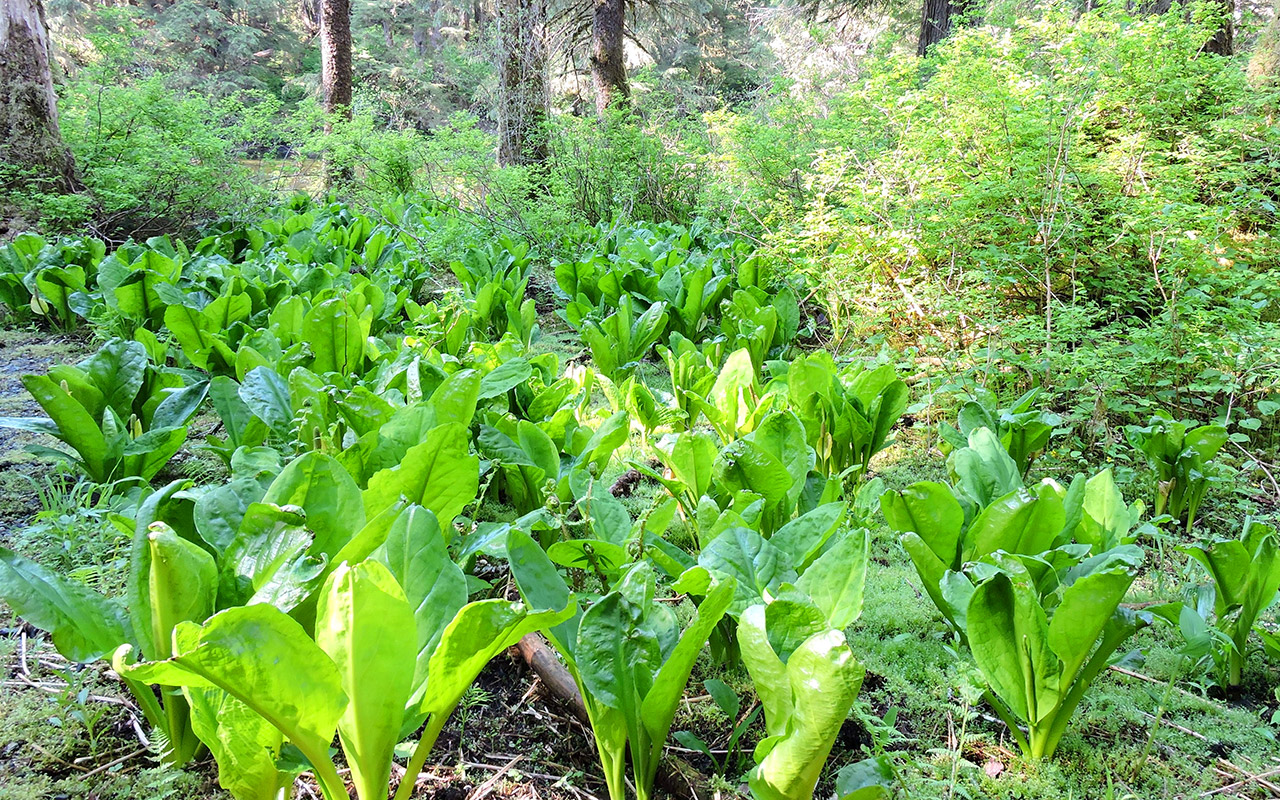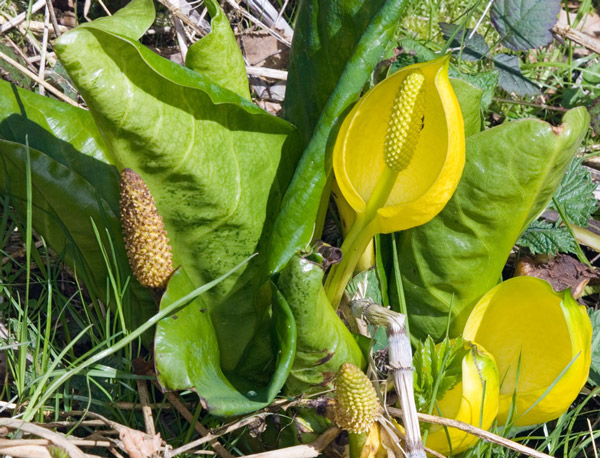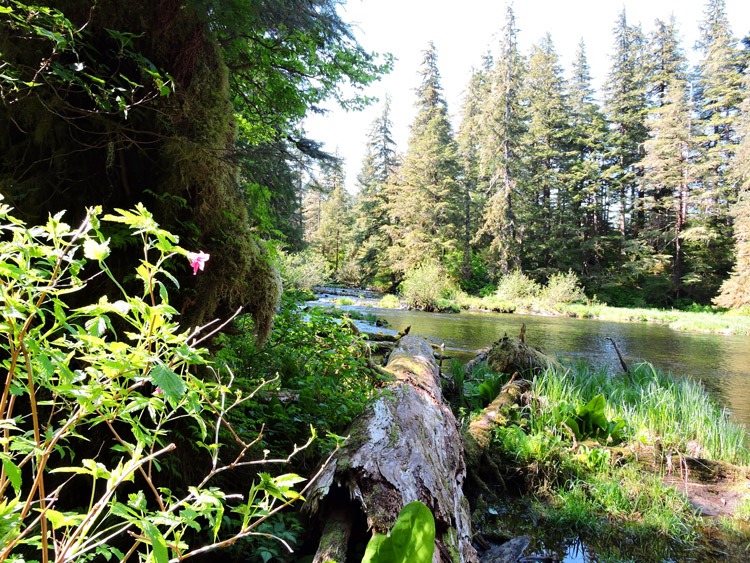
“When we try to pick out anything by itself, we find it hitched to everything else in the universe.”
– John Muir (1838-1914)
Engineer, naturalist, philosopher, writer, botanist, geologist – Sierra Club founder.
Skunk Cabbage is the first sign of spring along the streams of Alaska. It sticks its green head up from under the melting snow to welcome the return of the breeding salmon.

When you look closely at the plant, the inner most leaf, around the flower, is bright yellow and the plant has a flower on a tall stalk, like a staff.
The Tlingit people of Southeast Alaska respect this special plant and understand how it is hitched to everything else.
Tlingit folklore tells of the salmon being so thankful for the early arrival of skunk cabbage, and its preventing the silt from the melting snow entering their spawning grounds, that they gave the plant a yellow blanket to keep it warm on cold nights and a staff to guide its way in the dark.
This story was given to me by Richard Kirchner, a naturalist, with permission from the Tlingit people. In Tlingit tradition, telling stories requires permission. If it is a cultural story, like this one, the permission comes from the tribal elders. If the story is about an individual, then their approval is required.
How wonderfully kind to think of only sharing stories of events and people after being given permission.
Naturalist William Lopez-Forment continues the story of the skunk cabbage; speaking as a naturalist and not from Tlingit legend:
Then, later in the summer and early fall, when the flowers on the skunk cabbage get full, the bears move up the banks gorging on the sweet flowers. The namesake smell of the cabbage does not discourage the bears as they eat more and more cabbage.
Soon the sweet flower of the skunk cabbage causes diarrhea for the bears. They continue to move up the banks of the stream, devouring sweet tasting plant after plant while the seeds of the skunk cabbage pass through and are nestled in their new home with a few tablespoons of fertilizer. This assures next year’s “yellow blanket to keep the plant warm on cold nights and a staff to guide its way in the dark…”

“When we try to pick out anything by itself, we find it hitched to everything else in the universe.” It’s good for me to think about this often. How do you view nature as being “hitched together?” Or is it?
Do you think Tlingit people practice their own version of Namasté?
How does spending time in nature inspire you? Do you draw energy from being outdoors?
“In the ordinary choices of every day we begin to change the direction of our lives.”
– Eknath Easwaran
As always, the conversation starts here.
Epilogue
Alaska may not be the best choice for everyone, but it was the right choice for me.
“It gets it, and I am just trying to figure it out.”
– Bruce
Thanks Brian Christiansen for this great video.

Hitched together does sound nice. Blessed be the ties that bind!
Yes Wade, hitched together is good for us.
NC House Bill 44 ‘un-hitches the universe’ when we exempt properties within the lower Neuse and the Tar-Pamlico river basins from 50-foot natural pollution protections allowing the removal of vegetation to permit development.
John Muir would be sad.
– Bruce
The ancients undestood this concept of everything being hitched or linked together.
We’ve lost that because most of us live our lives incognizant of the natural world and our dependence on it for our very existence.
I find that when I spend time in nature using all of my senses to try to absorb it’s beauty and mystery, I come away feeling more balanced physically and emotionally.
It’s a connection I feel as being part of my being.
Bruce, I grew up on a farm in PA with Skunk Cabbage. Never thought of the connections but then we didn’t have any bears. Maybe the muskrats performed that role.
Richard,
I am sure there are numerous connections I have not considered. On one level that is exciting as I want to learn more, but on another level, I am concerned because of the damage we do in nature without even knowing of our wrongdoing.
Thanks for being a regular part of the conversation.
– Bruce
Christina,
Thank you for joining the conversation. Yes, nature provides balance to my life. My son, his daughter and I did a great hike Sunday in one of our state parks. The hike was awesome and the three generation experience was even better. I explained the Tlingit tradition of gesturing, not pointing, to plants and animals. They appreciated the message.
We can become disconnected – from our environment and from each other – unless we remain engaged.
– Bruce